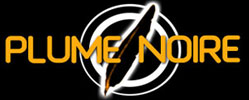
|
|
Using a series of flashbacks rather than advancing in straight chronological order, Into The Wild made me fear for a moment that the film would be stigmatized by Mr. Penn's naïve activism – not that I don't agree with what he stands for, but McCandless' rebellious vision of the world is somewhat reminiscent of what turned the actor into a caricature in the acidic and hilarious Team America: World Police. Man against Society Fleeing his parents and rejecting society, McCandless – incarnated with bravura by Emile Hirsch – cuts ties with everybody and everything, giving away his money and burning all forms of identification, as if he were running from some great danger. His motivations, however, are quite the opposite as he's curiously attracted to Alaska, whose beauty he assumes can only be experienced alone by returning to nature. From seeing him live alone in the middle of nowhere to the way he abandons his family, we quickly understand that McCandless' way of life owes more to his egoism than to some sort of patchouli ideology. At this moment, it becomes clear that Mr. Penn doesn't necessarily embrace the path of his character nor is he trying to launch into some hippy tirade. Man against Nature As the film nears the end, the director shows that the battle between man and society turned into an unexpected battle of man versus nature. As flawed as modern society can be, we realize, along with McCandless, that society is a shelter against the harshness of nature and that happiness needs to be shared with other human beings. Of course, it's not news to most of us but what is pretty disturbing is how long it takes for such a smart young man to understand that. The failure of the form To share with us this rather extraordinary journey, Mr. Penn based his screenplay on Jon Krakauer's novel, which was itself a somewhat loose adaptation of random notes that McCandless left, at least for the last part. While I don't know how much material was available to make this story as accurate as possible, what I'm sure about is that neither the book nor the film was able to craft a satisfying portrait of McCandless. Because the book doesn't give enough insight, Mr. Penn's is forced to stay at a superficial level, never able to give us a look at what is happening inside his character. His motivations – going to Alaska – remain blurry until the very end and we never really share his experience, because we never get to confront what he feels. McCandless advances like a ghost, touching the life of people he meets but then cowardly disappearing. The portrait of the characters he encounters on his road aren't more satisfying either, feeding on clichés and heavy-handed metaphors that are too good to be true: how many times does he need to meet childless couples to make us understand that he needs good parental figures and vice versa. Nor do we ever really get to understand why he bonds with all these people since he remains detached and emotionless. In terms of filmography, Into the Wild seems like a logical continuation, building up on Mr. Penn's favorite themes – loneliness, pain and naturalism – that were exhibited at different levels in all of his previous works. While his naturalistic approach here clearly aims at following the path of Terrence Malick, Mr. Penn needlessly succumbs to shooting his character in various poses – writing by the ocean, standing with his arms up in the air on top of mountains, etc… Not to say that Penn can't successfully suck us into this story, because he does, but the lack of material seemed to doom the
|
|

